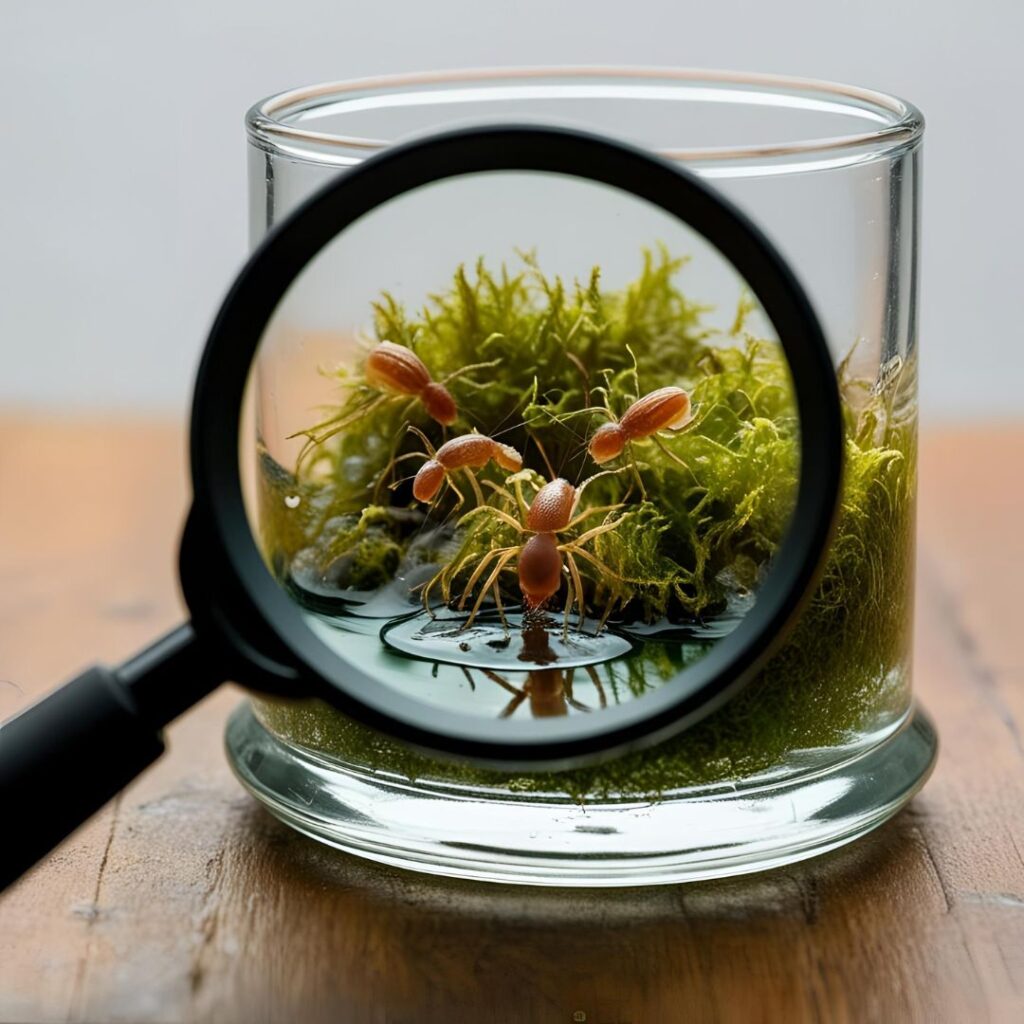Observing nature’s microworlds can be a fascinating and educational experience, especially when you have the right tools and knowledge to explore them. Microworlds, these small ecosystems invisible to the naked eye, are filled with life and complexity. Although these tiny worlds are often hidden under leaves, stones, or in the bottom of a puddle, with a bit of curiosity and patience, anyone can observe and learn about them, even at home. In this article, we will suggest some simple and accessible experiments to explore these microworlds and discover the biodiversity around us.
1. Creating a “Jar Ecosystem” with Moss
Mosses are fascinating plants that can create their own micro-ecosystems, sustaining life in a moist, enclosed environment. Creating a “jar ecosystem” is one of the easiest and most exciting ways to explore microworlds.
How to do it:
- Find a transparent glass jar (like a small aquarium or a jar from the kitchen).
- Collect a small amount of moss from a damp area in your garden or park (make sure it’s allowed to collect moss from nature).
- Place a layer of small stones at the bottom of the jar to drain the water and ensure the moss gets good airflow.
- Add a thin layer of soil over the stones.
- Place the moss on top of the soil and moisten the surface.
- Close the jar with a lid or plastic wrap, creating a closed and humid environment for the moss.
- Place the jar in a spot with indirect light, like a window.

What to observe:
Over time, you’ll be able to see how the moss grows and creates small communities of microscopic organisms, such as fungi and bacteria. If you observe closely with a magnifying glass, you might even see small insects or interesting patterns forming on the moss surface.
2. Puddle Water: The Ephemeral Ecosystem
The puddles that form after rain are a great opportunity to observe a micro-ecosystem in action. These temporary environments are home to a wide variety of microscopic organisms, such as larvae, rotifers, and infusoria, which can easily be observed with a magnifying glass.
How to do it:
- After a rainstorm, go to your garden, backyard, or a nearby area where a puddle has formed.
- Collect some water from the puddle with a spoon or small cup.
- Drop a small amount of water onto a glass slide or transparent dish.
- Use a magnifying glass or, if possible, a microscope to observe the organisms living in the water.
- Watch how tiny larvae or microscopic organisms move around.
What to observe:
Temporary puddles can reveal an impressive microscopic world. You’ll see tiny animals swimming and interacting with each other, some hunting, others hiding. These puddles, although ephemeral, provide a wealth of life that adapts quickly to these short-lived environments.
3. Wet Stones: The World Beneath the Surface
Another simple and fascinating experiment is to observe what hides under stones. Often, when we leave a stone wet outdoors for a while, it creates a perfect microenvironment for organisms like lichens, mosses, insects, and even small invertebrates.
How to do it:
- Find a large or small stone in your garden or in a natural area.
- Wet the stone thoroughly with water.
- Place the stone in a moist area and leave it for one or two days.
- After this time, use a magnifying glass to examine what is hidden underneath the stone.
What to observe:
You’ll see lichens growing in the cracks of the stone, small larvae, insects, and even ants moving around. This experiment helps demonstrate how life can thrive in seemingly sterile environments and how different organisms adapt to specific microenvironments.
4. Setting Up a Small Aquatic Garden
Another simple experiment is to create a small aquatic garden using water plants from your garden or a local source. These gardens, no matter how small, can be rich in microorganisms and tiny animals that thrive in aquatic environments.
How to do it:
- Find a shallow glass dish or container.
- Fill it with clean water (preferably from rain or tap water, if possible).
- Add some small aquatic plants, like water lettuce or aquatic moss.
- Observe how the plants grow and how different creatures, such as tiny crustaceans, larvae, or even small fish, may inhabit this microenvironment.
What to observe:
Over time, the aquatic garden will start to create a micro-ecosystem with different forms of life. Using a magnifying glass, you’ll be able to see the interaction between the aquatic plants and the tiny organisms living in the water, such as microcrustaceans and larvae.
5. Observing Fungi and Bacteria on Organic Debris
Fungi and bacteria are essential for the decomposition process and can be found on organic debris like dry leaves and dead wood. These organisms play a crucial role in ecosystems by recycling nutrients and maintaining ecological balance.
How to do it:
- Collect dry leaves, wood pieces, or other organic debris from your garden.
- Place them in a small glass or plastic container.
- Observe the organic debris over time, and with a magnifying glass, examine how fungi and bacteria begin to develop.
- You can speed up the process by placing the container in a warm, humid environment.
What to observe:
You’ll see how fungi begin to grow, forming interesting patterns and structures that are nourished by bacteria. This experiment allows you to observe how microorganisms play a vital role in decomposition and the nutrient cycle.
Explore and Learn from the Nature Around You
These simple experiments offer a fantastic opportunity to learn about the natural microworlds surrounding us. By observing these small ecosystems, we can see how life, in all its forms, is resilient and adaptable. These activities also help foster an interest in science and nature, allowing both adults and children to explore, learn, and connect with the environment around them.





